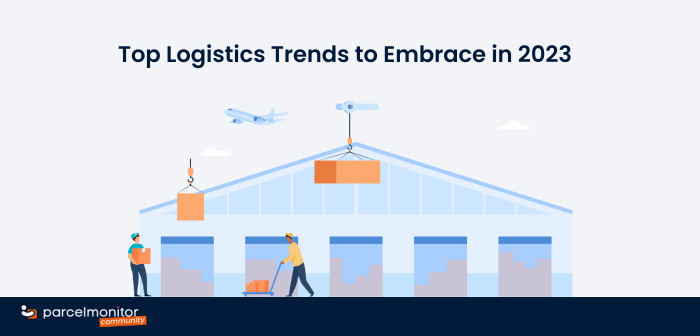These days, logistics companies have to apply more and more cutting-edge technologies in the supply chain to accomplish different business goals ranging from reducing expenses to increasing customer satisfaction. Needless to say, keeping up with the most recent advancements in the logistics industry is crucial in an era where technology is constantly changing.
Which technologies are the most outstanding and what trends do businesses have to keep in mind to enhance business development?
Embracing complexity through automation
The first trend that businesses cannot overlook is automation which, in fact, has significantly enhanced effectiveness in the supply chain. Today, we can see automation in both software and hardware types. For example, online marketplaces and automated tools for managing seller-customer interactions are now extremely popular. When it comes to hardware type of automation, we can see the popularity of technologically sophisticated storage apparatus, autonomous vehicles and delivery drones.
Thanks to automated systems, businesses can collect data more efficiently and key decision-makers can comprehend this data easily. Automation assists companies greatly in improving their logistics strategies and processes, increasing the quality of their products, and forecasting future trends and outcomes.
The use of data mining to reduce logistics cost
It is essential for logistics firms to decipher and analyze their available business data. This will help them find current trends and statistics that assist company executives in developing more effective supply chain management plans. These patterns, which may come from product orders among other places, could be so nebulous that humans can have trouble in discovering them without any assistance. In order to handle this, specialized computer software and solutions are created.
Data mining has become more widely used as a result of the evolution of artificial intelligence (AI) and big data technologies. In fact, it can be implemented in the transportation sector to lower costs by spotting inefficiencies and places where resources can be best utilized. Logistics firms can spot patterns and trends that might be causing higher costs by gathering and analyzing data on transportation routes, inventory levels and order processing times. For instance, they might find that particular routes or modes of transportation are less effective than others, resulting in increasing prices and extended delivery times.
Growing popularity of multimodal logistics
The term “multimodal logistics” describes the practice of moving goods between geographically distinct areas using a variety of modes of transportation. In order to create a supply chain that is seamless and effective, this method integrates various forms of transportation, including road, train, air and sea. One major benefit of multimodal logistics is that it enables companies to maximize the benefits of various forms of transportation while minimizing their drawbacks. For example, shipping goods is more affordable, but this method of transportation is slower than flying.
A further important advantage of multimodal logistics is that it gives companies more adaptability and fortitude in the face of unforeseen disruptions like port closures or traffic jams. Businesses can quickly respond to changing conditions and guarantee that products are delivered on time by having a variety of transportation options at their disposal.
To read the full article at Parcel Monitor, click here.


